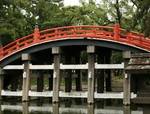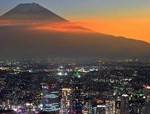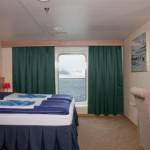Iceland destination information
Iceland is full of exciting adventures waiting for you at every turn. Find your adventure here
Activities
Hiking: Iceland is the hiker’s paradise. More than half of the country lies above 400 meters (1300 feet) and the landscape is extraordinarily diverse, with large areas covered with colorful mountains, lava fields, glaciers, hot springs, lakes and black sands. The rugged nature has been shaped by the elements to form a majestic scenery unlike any other place in the world.
Organized hiking tours are available for booking all around the country. Day or weekend tours are popular during wintertime, and longer tours are organized during summer. You can take an organized excursion or go hiking yourself. If you organize your trip independently, caution should be exercised at all times. Make sure you bring adequate clothing and provisions, and that someone knows where you are going. Visit www.safetravel.is for further safety information and to register your travel plan in case of an emergency.
Iceland offers a vast range of exciting activities, whether you want to gaze at the Northern Lights, hike across the highlands, see giant whales in their natural environment or relax in a hot spring.
Iceland inspiration
Birdwatching
Iceland is often referred to as a birdwatcher’s paradise, as large colonies of seabirds and waterfowl are indigenous and easily visible around the coasts.
The birds most frequently spotted along the coasts of Iceland include the Arctic Tern, eiders, waders and passerine birds, as well as seabirds such as the Guillemot, Razorbill, the Atlantic Puffin, Fulmar, gannets and various gulls. Destinations for bird watching day trips from Reykjavík include the Reykjanes Peninsula, the Snæfellsnes Peninsula or the Westman Islands, where Iceland’s largest puffin population lives. When visiting breeding grounds around Iceland, be sure not to wander off the marked trails, as nests can be located anywhere
Swimming pools and Spas
The local natural wonder that is perhaps most ingrained in the fabric of Icelandic culture is the bounty of geothermal energy, the naturally heated water that powers our lives and heats our homes, baths and pools, public as well as private.
The spa is a modern day invention, but enjoying the various health benefits of bathing in thermal baths is an Icelandic tradition dating back to the settlement. Snorri Sturluson, the famous twelfth century historian and author, was a prolific spa enthusiast by modern standards, and had his own thermal pool built so he could soak in hot water whenever the mood struck him. Of the thirteen baths that are known to have been used in the early days of the Icelandic society, four are still standing. As unlikely as it may sound, Reykjavík sports its own geothermal beach, with white sands and warm ocean water
Whale watching
Iceland is the perfect location for whale watching. The cold waters off the coast play host to a diverse marine life. During the summer months in particular, the shores become a veritable feeding ground for multiple species of large marine mammals, giving visitors a chance to observe these magnificent creatures in their natural habitat.
The most prolific time for whale watching in Iceland is during the summer months, from April through September, when over 20 species of Cetacea—including the Orca, Minke, Humpback and Blue Whale—can be seen in the North Atlantic and Arctic oceans on either side of the island. The most prolific time for whale watching in Iceland is during the summer months, from April through September, when over 20 species of Cetacea—including the Orca, Minke, Humpback and Blue Whale—can be seen in the North Atlantic and Arctic oceans on either side of the island.
Northern Lights
The extreme dark of the Icelandic winter has a few perks. Between September and April, Iceland is treated to a magnificent natural display: the phenomenon of aurora borealis, named after the Roman goddess of dawn, Aurora, and the Greek name for the north wind, Boreas. This is what we commonly call the Northern Lights.
The Northern Lights are formed by particles emitted by the sun during solar explosions. When these particles interact with the atmosphere in the Earth’s magnetic field, energy is released, causing these peculiar luminous green streaks across the skies.
On clear winter nights, many sightseeing trips are organized around this spectacular—though fickle—natural phenomenon. The ideal location for sightings varies and excursion leaders are skilled in “hunting” the lights, finding locations where conditions are best for seeing them on any given night. There are no guarantees that you will see the aurora borealis during your stay, but in almost all cases, however, sightings are immediately improved outside populated areas, especially away from the light-pollution of the capital. However, the Northern Lights are sometimes visible from within the city, and on many cold winter nights news spread quickly between locals around town, who implore each other to go out for a look at our local wonder. The Icelandic Met Service provides a daily Northern Lights forecast, which will further improve your chances of catching this wonderful display of nature.
Iceland in Numbers
Biggest Cities: Reykjavík (120,000)* Kópavogur (32,000)* Hafnarfjördur (27,000)*
Akureyri (18,000) Reykjanesbær (14,000) *Cities in the capital region
National Flag: Blue with a red cross outlined in white.
The colours of the flag are symbolic for Iceland: red is for the volcanic fires, white recalls the snow and glaciers, and blue is for the mountains in the distance.
Population: 325,000 (Jan 2014)
Average temperatures: January 0,4 : March 3,1 : May 6,3 : June 10,7 :
July 12,5 : August 12,3 : October 4,4 : December 1,2
Capital City: Reykjavík
Government: Parliamentary constitutional republic.
Language: Icelandic. English is widely spoken and understood.
Official Name: Iceland (Ísland)
Religion: Predominantly Christian.
Time Zone: Greenwich Mean Time (GMT) throughout the year. Unlike most states in Europe, Summer (Daylight-Saving) Time is not observed in Iceland.











